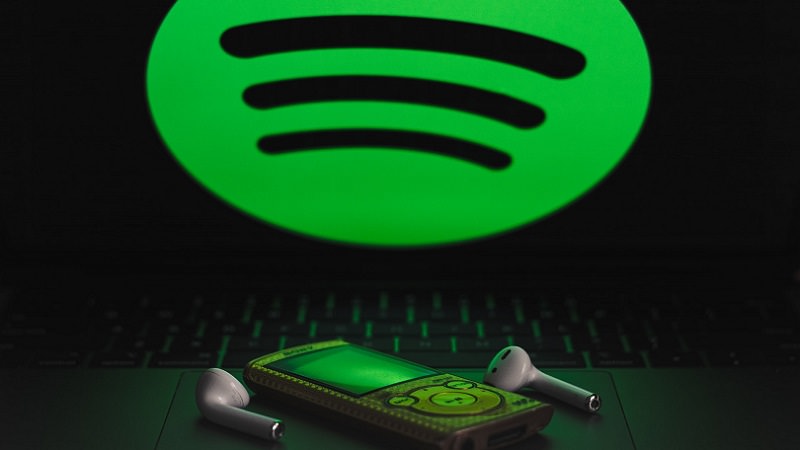Spotify is the biggest streaming service in the world and also the biggest disruptor of the music industry. But many artists complain. That’s why Spotify wants to become more transparent. We present you with the most important Spotify statistics and open questions.
How much revenue and profit does Spotify generate?
When we take a look at the most important Spotify statistics, the financial key figures must of course also be included.
Revenue in the 2020 fiscal year was 7.8 billion euros. For comparison, in 2015, the revenue was still 1.9 billion euros. At the same time, however, the loss increased from 230 million euros (2015) to 581 million (euros).
In general, a look at the revenues shows: Since its founding in 2006, founder Daniel Ek’s company has not been able to generate a single (!) profit. So ultimately, Spotify’s business model is still not lucrative.
How much money does Spotify pay artists per stream?
Spotify is keeping a low profile on this question – even on its new transparency page “Loud & Clear“. There, the streaming service beats around the proverbial bush for a long time.
It’s difficult to calculate a payout per stream, for example, because that depends on the license fees and the artists’ agreements with their labels. Likewise, Spotify’s goal is to maximize revenue so that it increases income for all artists.
Both ideas have merit, but prove problematic in reality.
Fortunately, there are both artists and analysts who provide insight into their books of business. This shows that Spotify pays an average of $0.00203 per stream. With one million streams per month, that makes $2,030.
By comparison, YouTube pays out just $1,540, while Amazon Music ($4,260) and Apple Music ($6,750) pay out significantly more.
How much money does Spotify pay out to artists?
Spotify itself provides an answer to this question. According to this, the music streaming service has paid out more than 23 billion US dollars to rights holders since its founding. Five billion U.S. dollars of this amount was paid out in 2020 alone, a new record according to Spotify.
Overall, the streaming business accounts for 50 percent of music revenues. With a share of 20 percent of total music revenues generated worldwide, Spotify is the biggest player on the market. In 2017, the figure was still 15 percent.
How many artists are there on Spotify?
That is one of the most exciting questions when looking at the Spotify statistics – and unfortunately it remains unanswered.
Spotify itself merely speaks vaguely of “millions of creators.” So there seem to be several million musicians and bands who use the streaming service for promotion. However, a concrete number is missing and that makes the classification of the following values more difficult.
How many artists earn how much money with Spotify?
Spotify actually answers precisely that question on its new transparency page. Here, the Swedish music streaming service compares the number of artists who have been paid the corresponding value. The comparative value in parentheses is the year 2017.
- 1 million US dollars and more: 870 (2017: 450)
- 500,000 US dollars and more: 1,820 (2017: 950)
- 100,000 US dollars and more: 7,800 (2017: 420)
- US$50,000 and more: 13,400 (2017: 7,300)
- US$10,000 and above: 42,100 (2017: 22,900)
- US$5,000 and above: 67,200 (2017: 35,600)
- $1,000 and above: 184,500 (2017: 89,700)
So, compared to 2017, all distributions are up significantly. However, just 23,890 artists and bands also earn an annual salary of more than $50,000 per year. With a speculative two million artists on Spotify, that would be just 1.2 percent.
A total of 317,690 artists reach the magic minimum threshold of $1,000 a year. Again, though, it’s exciting to flip the Spotify stats. So of the speculative two million musicians, almost 85 percent (!) don’t even earn $1,000 a year.
In addition, it must be said that “millions of creators” are probably more than two million. So the actual numbers are even clearer.
Spotify stats: Spotify pulls itself out of focus when it comes to payment
Looking at the Spotify statistics, the role of Spotify itself is interesting. This is clearly not a partnership, although the streaming service communicates this differently.
Spotify itself says: “We don’t pay songwriters and artists. We pay the rights holders.” In most cases, that’s the record labels, not the musicians directly. The labels, in turn, get about two-thirds of every dollar generated. So Spotify itself keeps a third.
So how much money ends up with the artist is not up to Spotify, but the contract the artists have with their labels. This view is also correct, but it is questionable in view of the fact that Spotify wants to be the voice of the artists.
Conclusion
Despite sales in the billions, Spotify has not yet succeeded in setting up a profitable business model. Moreover, it is not so much the artists who profit from streams, but rather the labels and Spotify itself.
Not even 1,000 artists earned more than one million U.S. dollars with Spotify in 2020. This also means that even for the most successful stars in the industry, Spotify is primarily a sideline. Other sources of income are significantly more lucrative.










